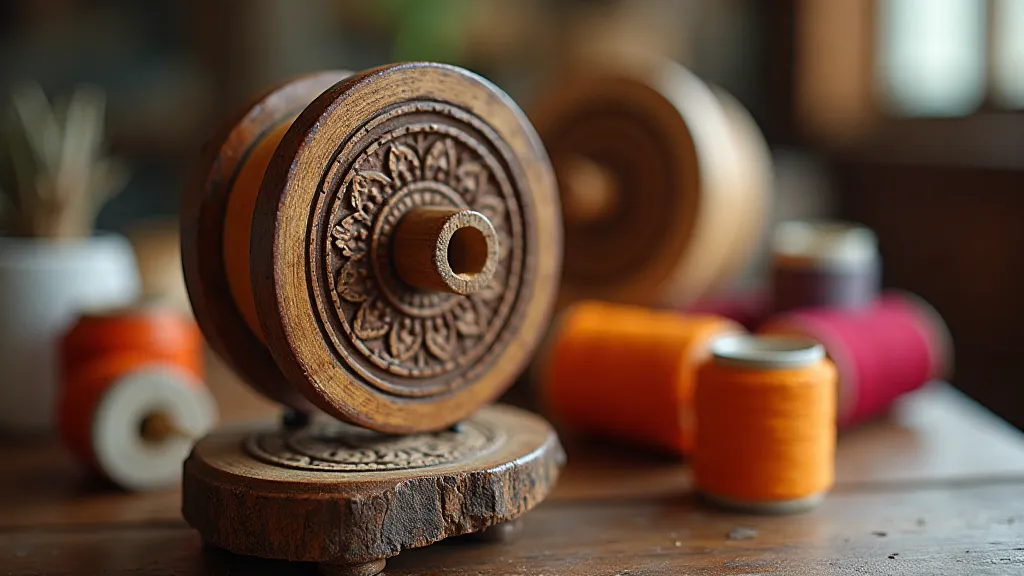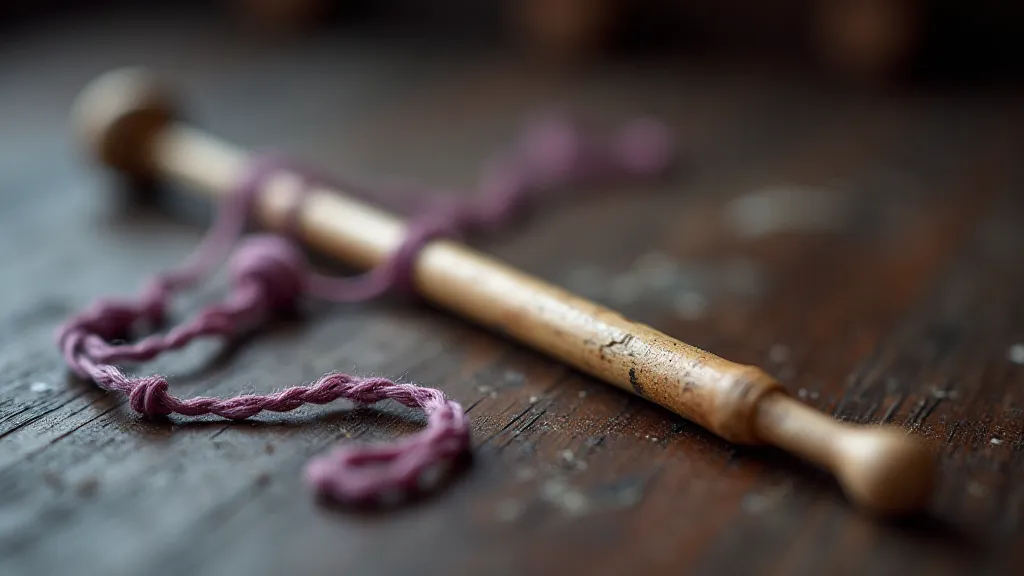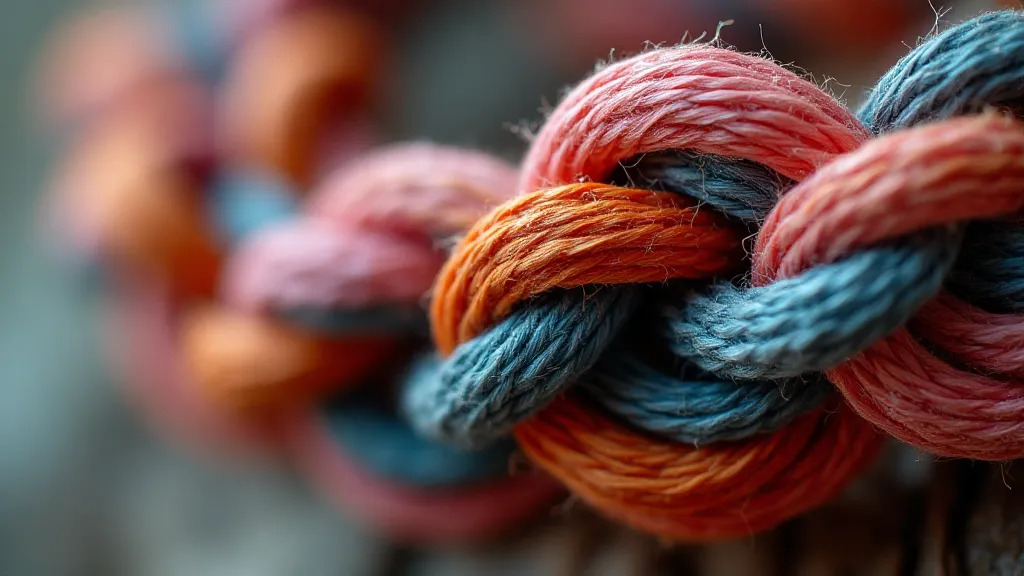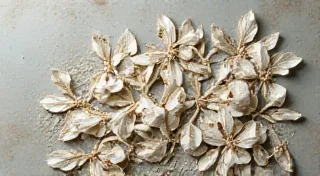The Loom's Whisper: Analyzing the Social Status of Kumihimo Artisans
The scent of aged mulberry silk, the quiet click of a wooden loom – these are the hallmarks of Kumihimo, a Japanese braiding technique that resonates with an almost meditative quality. More than just cord making, Kumihimo is a living testament to centuries of artistic skill, a tradition interwoven with the social fabric of Japan. To understand the artistry of Kumihimo is to glimpse into the lives of the artisans who kept it alive, and their journey reveals a fascinating evolution of social standing, skill, and the subtle power of beauty.
For many Westerners, the term "artisan" conjures images of quaint shops and handcrafted goods. But within Japan’s hierarchical past, the term held a deeper significance, reflecting not only skill but also place within the rigid social strata. Kumihimo artisans, particularly those creating cords for samurai armor and religious artifacts, occupied a surprisingly nuanced position, far from simple laborers, yet never quite members of the ruling elite.

Early Days: From Imperial Workshops to Warrior's Trust
Kumihimo’s origins are shrouded in some mystery. While the exact date remains elusive, evidence suggests braiding techniques were employed in Japan as early as the 7th century. Initially, production was likely centralized in Imperial workshops, fulfilling the demands of the court. These early artisans were bound by imperial decree, producing intricate cords primarily for ceremonial robes and decorative purposes. Their social standing was largely dependent on their proximity to the emperor and the prestige of their commissions.
However, the rise of the samurai class dramatically reshaped the artisan's role. The crucial element? Odoshi, the ties that secured samurai armor. These weren’t mere functional cords; they were symbols of strength, durability, and the warrior’s dedication to the arts. A badly made odoshi could literally mean the difference between life and death on the battlefield. This elevated the Kumihimo artisan's skill to a position of great responsibility and, consequently, a degree of respect. A skilled artisan who crafted perfect odoshi earned the trust of the warrior class – a powerful and influential position.
Imagine the weight of that responsibility, the hours spent meticulously planning and executing each braid, knowing your work could impact a samurai’s fate. It wasn't just craft; it was a commitment, a silent pact between the artisan and the warrior. The best artisans would be sought after, their workshops quietly respected, their names known only within specific warrior clans. Beyond simply securing armor, the artistry of the braids spoke to a broader philosophy of reverence and attention to detail—a connection that subtly influenced the cultural narrative surrounding these skilled craftspeople. The importance of these traditions also touches on the wider symbolic language embedded within Japanese culture, inviting exploration of unraveling the myths and folklore that surround the textile realm.
The Edo Period: Specialization and Emerging Guilds
The Edo period (1603-1868) brought a period of relative peace and economic stability, leading to increased specialization within the artisan community. Kumihimo artisans began to specialize in particular types of braids, catering to a broader range of customers – from temples requiring decorative cords to merchants seeking sturdy sashes. This led to the formation of informal guilds, or dō, that provided structure and regulated quality. While not as powerful as merchant guilds, these dō provided a degree of protection and established standards of craftsmanship.
The emergence of decorative Kumihimo, used for everything from obi (sashes) to hair ornaments, also influenced social standing. While still respectable, these artisans often occupied a lower rung than those creating military-grade cords. However, mastery of complex color combinations and intricate patterns – shikibutai braiding, for instance – could elevate their status and command higher prices.
There's a certain melancholic beauty in contemplating the lives of these Edo-period artisans. They toiled in often-dimly lit workshops, their hands weathered from years of repetitive motion, producing objects of beauty that were often taken for granted by the wider world. Their contribution to Japanese culture was profound, yet their own stories were often lost in the shuffle of history. The intricacy of the braids themselves, and the cultural meanings woven into them, speaks to a deeper system of beliefs and cosmological understandings. It’s tempting to delve deeper into the principles governing these practices, perhaps even examining how these artistic creations resonate with the geometry of reverence and Shinto cosmology.
Meiji Restoration and the Shifting Landscape
The Meiji Restoration (1868) ushered in a period of rapid modernization and westernization. The feudal system collapsed, and traditional crafts faced significant challenges. The demand for military-grade Kumihimo plummeted, and artisans were forced to adapt to a new economic reality. Many were displaced, their skills seemingly obsolete.
However, the appreciation for traditional Japanese aesthetics persisted, and Kumihimo found renewed purpose in the creation of decorative textiles and accessories. While the reverence afforded to military artisans diminished, a new appreciation for the artistry of Kumihimo emerged among a broader segment of society. The skills passed down through generations were deemed worthy of preservation, if not necessarily for practical use.

The Fragility of Tradition: Examining the Materials and Techniques
Beyond the social standing of the artisans, understanding the process itself reveals a deep respect for the materials and the techniques involved. The finest Kumihimo was, and still is, created using silk, often dyed with natural pigments derived from plants and minerals. The process of preparing the silk – reeling it from the cocoons, spinning it into thread, and dyeing it – was a significant undertaking in itself, requiring specialized knowledge and considerable time. The care taken in selecting and preparing these materials directly impacted the final product's quality, durability, and aesthetic appeal.
The very act of braiding, a seemingly simple process, demands a remarkable level of precision and coordination. The rhythmic clicking of the braiding stand, the careful winding of the threads, and the constant monitoring of tension – all contribute to the creation of a braid that is both beautiful and structurally sound. The skill of a Kumihimo artisan wasn't just about following a set of instructions; it was about intuitively understanding the properties of the materials and adapting their techniques accordingly. And even small deviations in humidity or temperature could impact the finished braid, highlighting the delicate balance between craft and the natural world.
Modern Interpretations and Legacy
Today, Kumihimo enjoys a resurgence in popularity, embraced by contemporary crafters and textile artists. While the historical social standing of Kumihimo artisans may no longer hold the same significance, the skills and techniques they mastered continue to inspire and inform modern practice. Modern artisans and hobbyists alike are working to keep the traditions alive while exploring new creative applications.
The emotional connection we feel to antique Kumihimo – whether it’s a treasured piece of armor or a delicate hair ornament – stems from an appreciation of the dedication and skill of the artisans who created them. Each braid tells a story, a whisper from the past that resonates with the beauty of human creativity. Perhaps the most lasting legacy of Kumihimo artisans isn't their social standing, but the enduring testament to the power of craftsmanship and the quiet beauty of a meticulously crafted braid. The cyclical nature of trends—where traditional skills experience periods of decline and revival—underscores the enduring power of artistic expression and the human desire to connect with the past. The forces that shape and reshape these traditions, and the ways in which they are perceived, are complex and intertwined with broader cultural shifts. It’s worth contemplating how the ephemeral strength and power of these delicate cords transcend their physical form, embodying a deeper cultural narrative.
Collecting antique Kumihimo pieces, or even restoring them, offers a unique opportunity to connect with that history. Understanding the construction, the materials used, and the potential repairs required requires an appreciation for the original artisan’s skills. Restoring a piece isn’t simply about patching it up; it’s about honoring the legacy of the craftsperson who created it – a gesture of respect for their skill and dedication.

Ultimately, the story of Kumihimo artisans is a testament to the enduring power of human creativity and the profound connection between art, culture, and society. Their legacy lives on not only in the exquisite braids they created, but also in the renewed appreciation for traditional craftsmanship that continues to inspire generations of artists and artisans.





